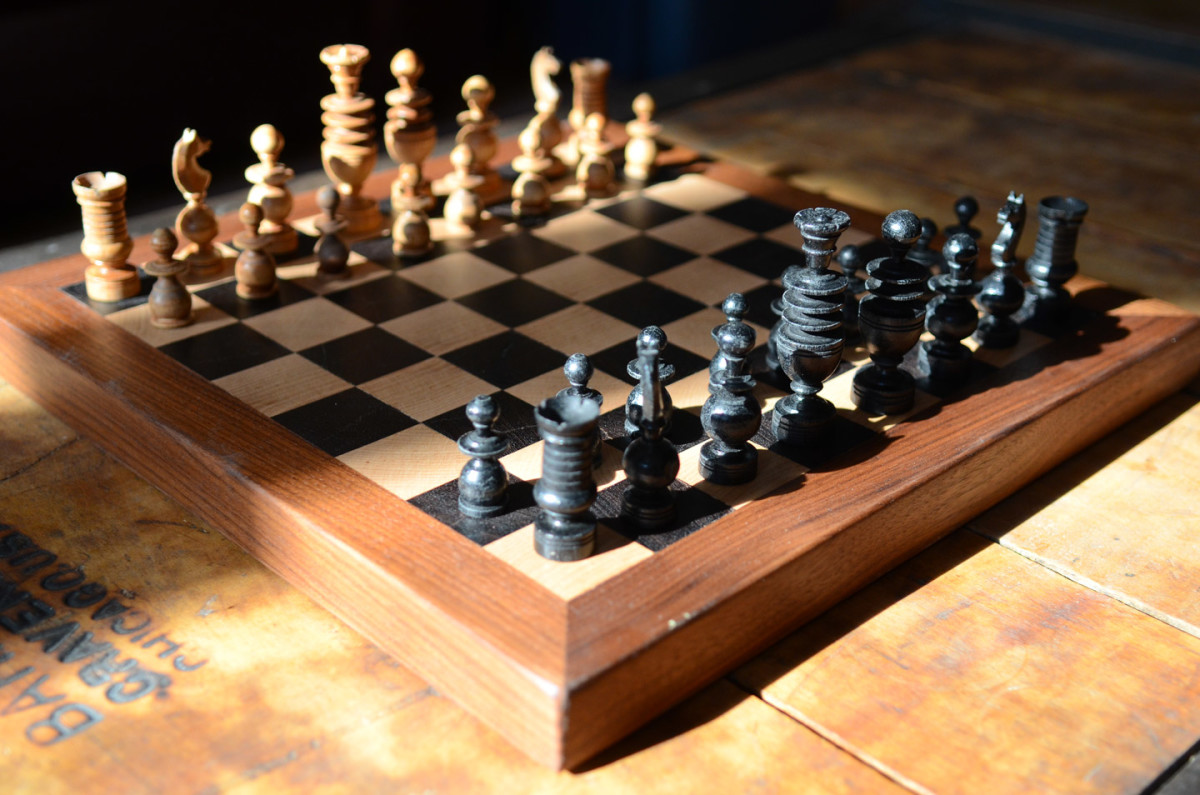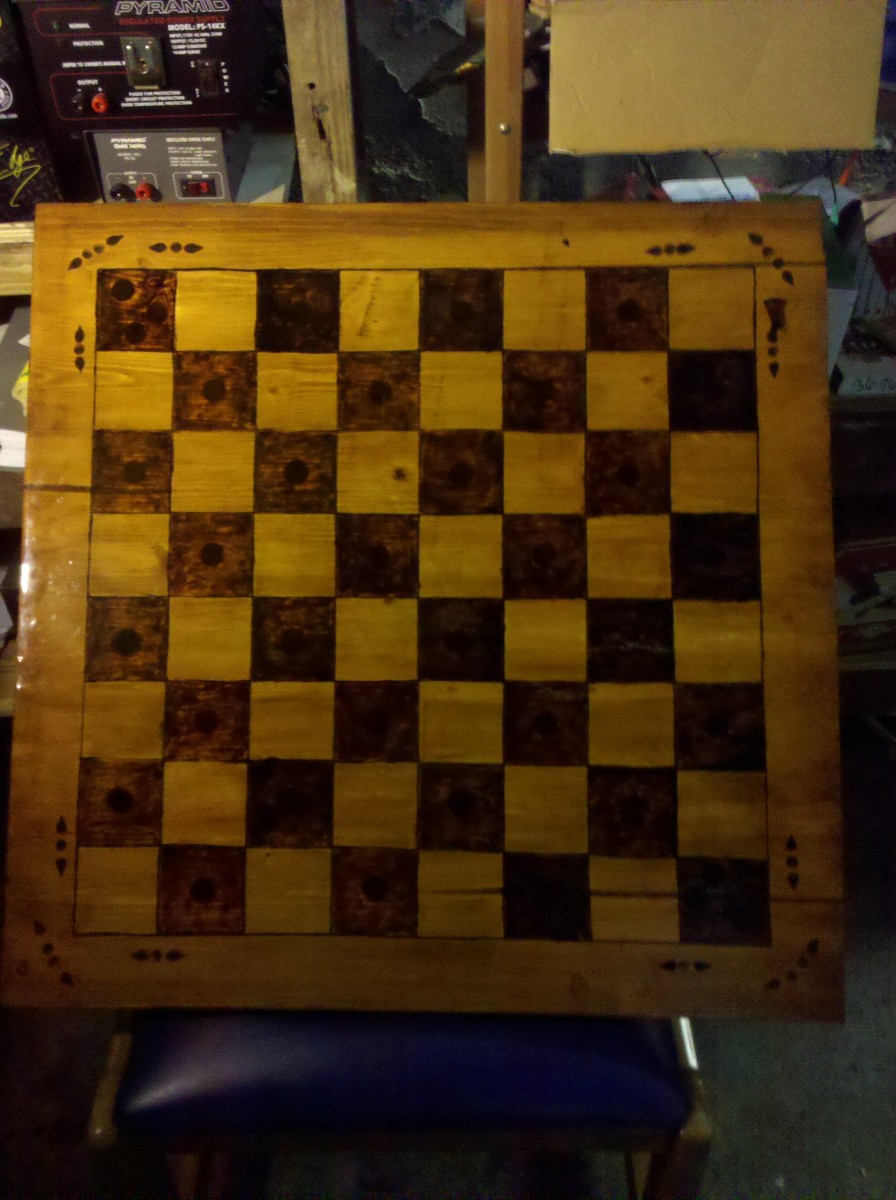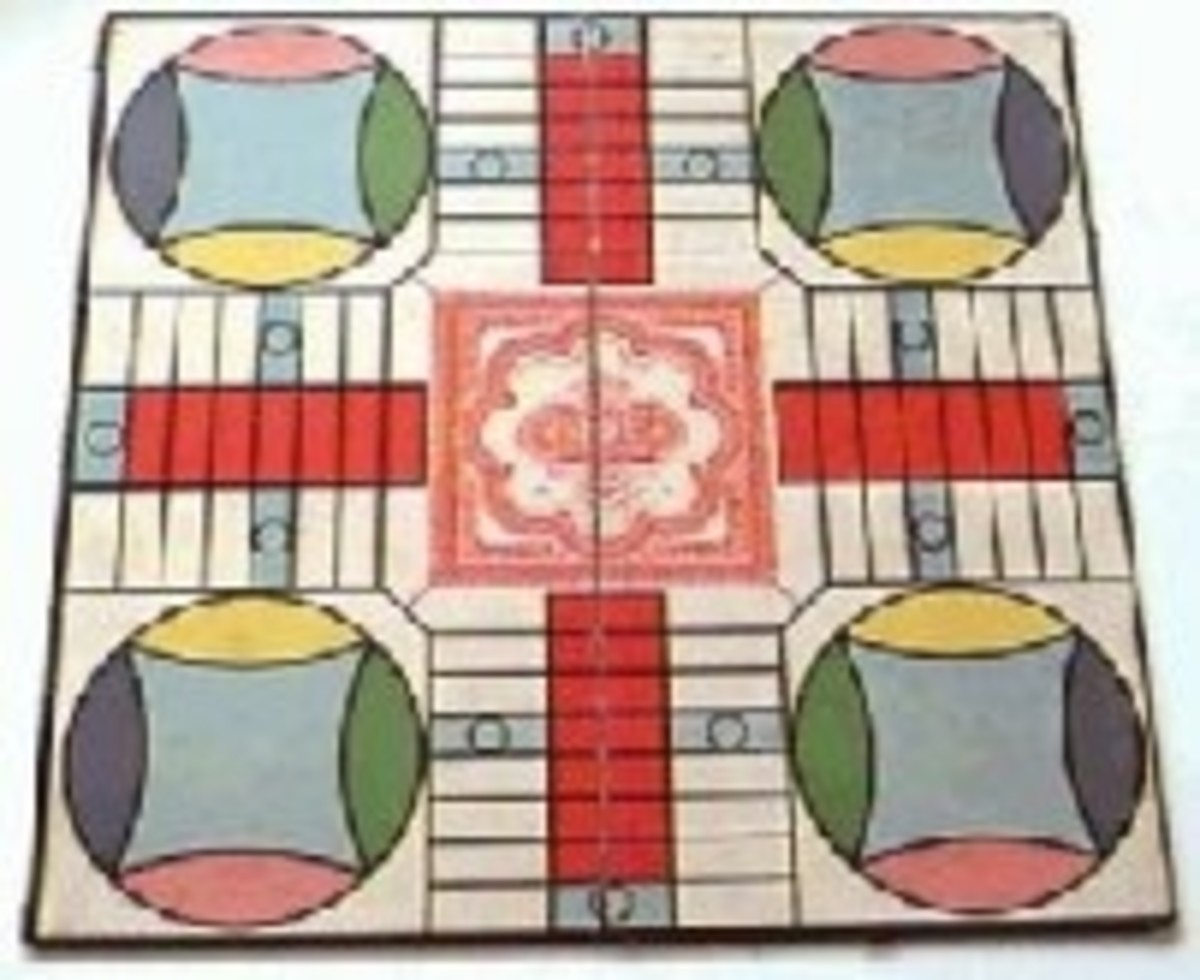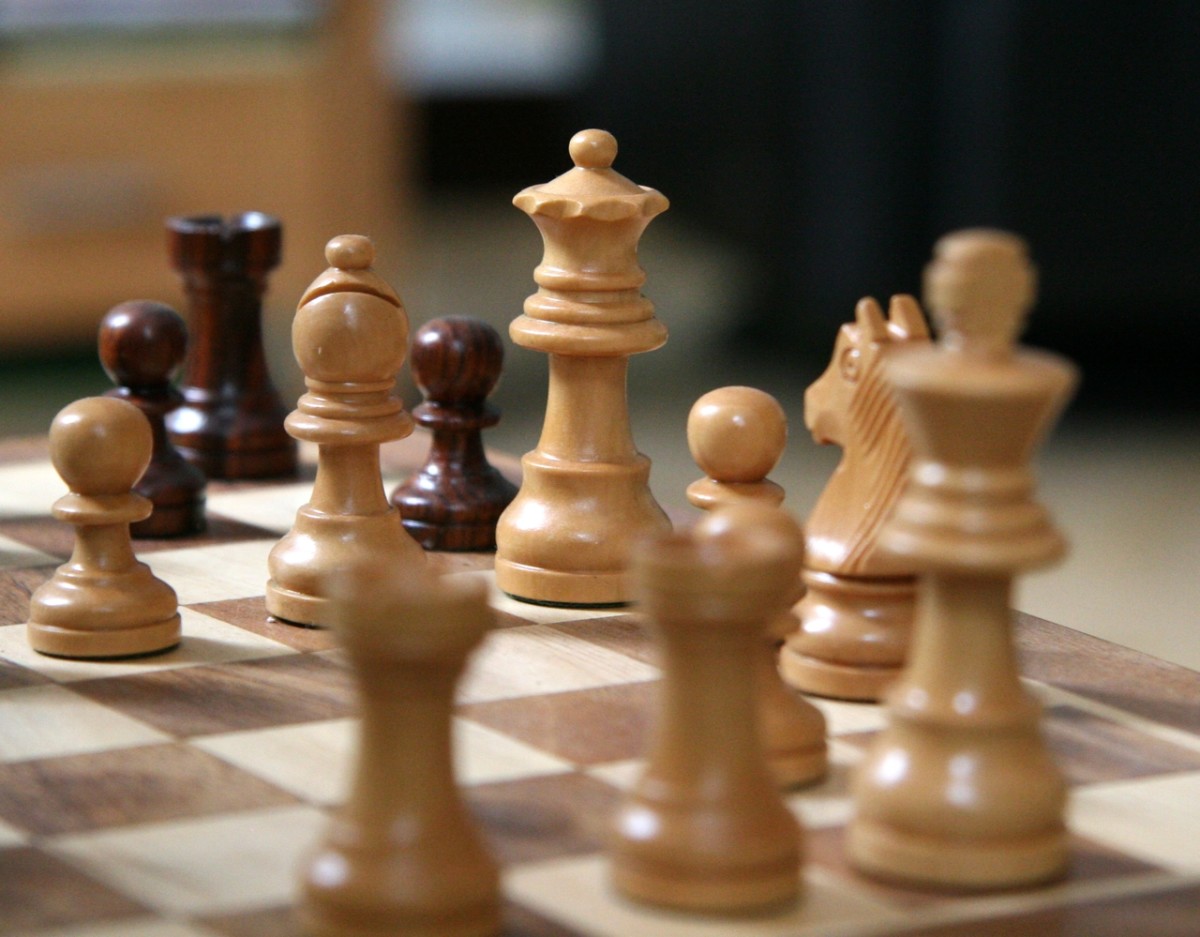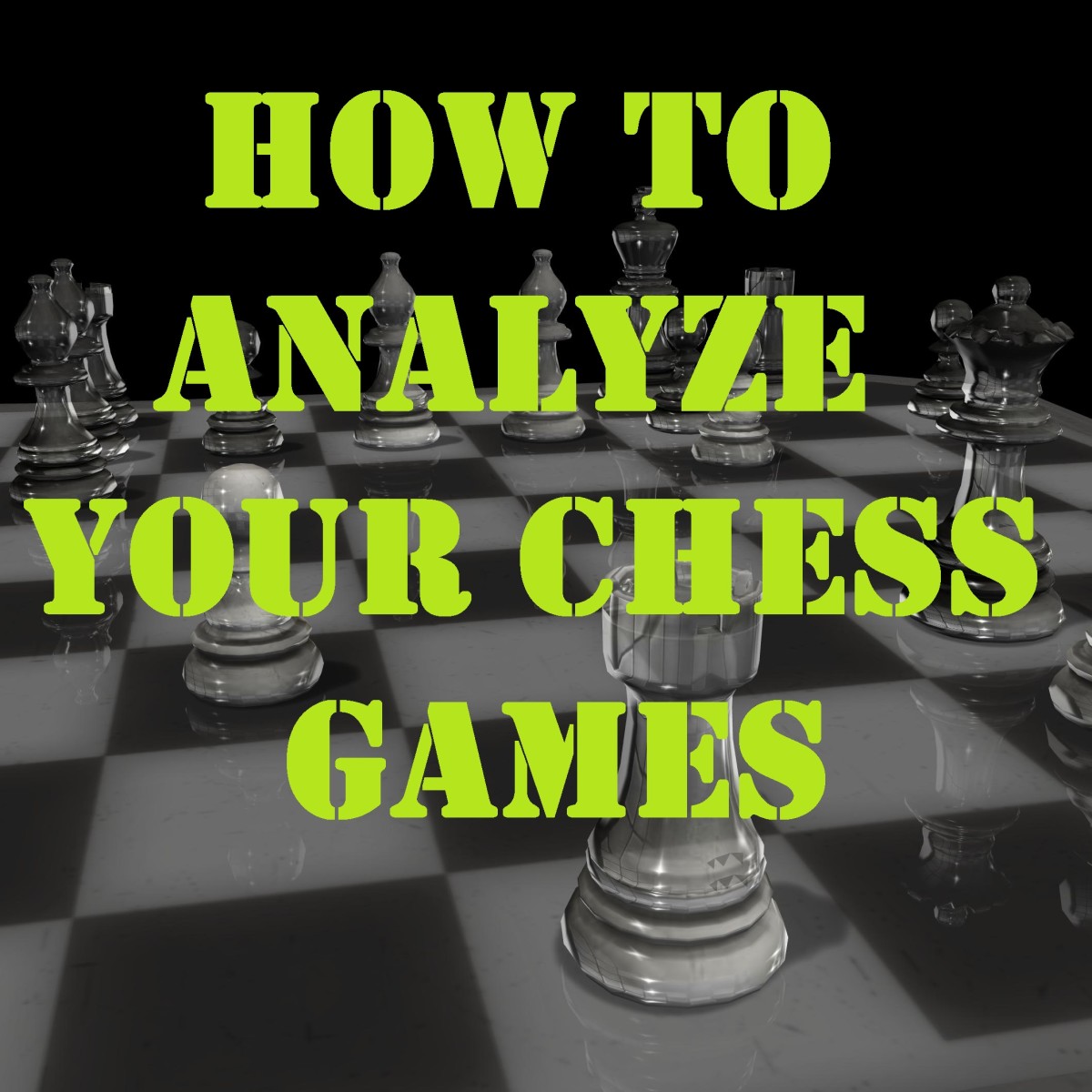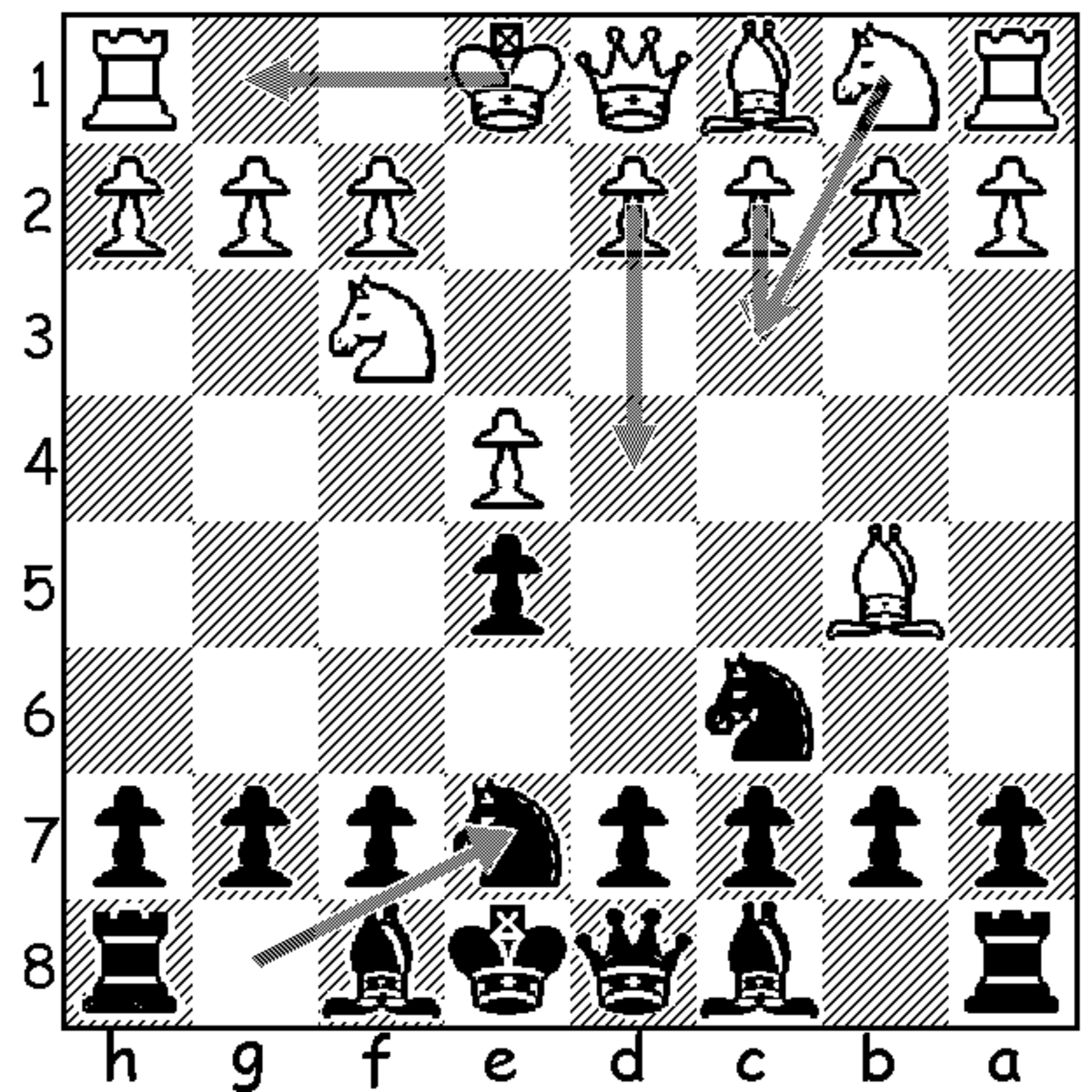How to Play Chess (A Beginners Guide to Chess - Board, Pieces, Openings and Strategies)

History of Chess
There are no documented proof of where or how the game of Chess began. However the earliest evidence of existence of Chess is found in Aisia-India to be specific. And the the game spread to the West through trade and military relationships. First to Persia, then to Arab, Europe and Russia. So that amounts to a history of over 1500 years. Throughout the centuries, the game had little changed-and the strategies, tactics and the fundamentals still remain unchanged.
18-19 centuries saw a boost in Chess play and first ever World Chess Championship was held in 1886. Some of the legends of Chess were from this era, such as Emanuel Lasker, José Raúl Capablanca, Alexander Alekhine, and Max Euwe.
World Chess Federation was formed in 1924 and official Chess began, with rated tournaments, championships, grandmasters and ELO rankings.
For the full list of World Chess champions, visit the Wikipedia page.
All these information has been extracted from 'A History of Chess' by H. J. R. Murray, which is displayed right next to this article.
Read this book by H. J. R. Murray for a complete guidethrough
“I don't believe in psychology. I believe in good moves.”

Chess, what?
If you think you are too young or too old for Chess, you are dead wrong. Chess knows no age limits. Ok, to be completely honest your brain will lose some processing power when you age, but that doesn't mean you cannot enjoy a good game of Chess with a friend.
Many elegant Chess players have picked up the game at very small ages of 4 or 5. Probably this, or some other cause have made them true geniuses of Chess. Jose Capablanca learned the game at the age of 4. Anatoly karpov, considered a modern day genius of Chess, learned the game at age 4.
So pick up a board right now and let's get on with it.
Listen to insights on Chess from the world's most talented Chess player of all time - Grandmaster Gary Kasparov
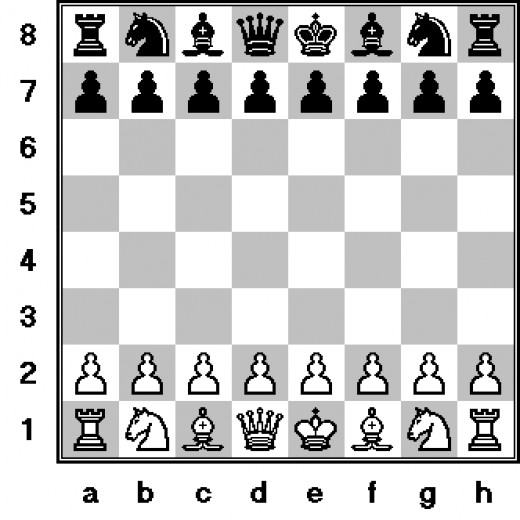
Ultra basics of Chess
Well, there's a board of 64 squares, each black and white, one after another and on the far edges stand the chess pieces-Black and White.
Each side had 16 pieces and placed on farthest two ranks. The first rank consists of the major pieces of Chess, namely, King, Queen, 2 Bishops, 2 Knights and 2 Rooks. The second row consists of 8 small pieces called Pawns. They may seem less and powerless, but they are immensely important for Chess strategy.
Each piece has a power ranking in Chess. It can be listed as follows.
- The King - power unlimited (I will explain the reason in the next area)
- The Queen - power of 9.
- Bishops - power of 3 for each piece.
- Knight - power of 3 for each piece.
- Rook - power of 5 for each piece.
Power ranking will be important when you are making decisions as to whom to sacrifice and who not to. But strategically thinking each piece's value could increase or decrease 'theoretically' according to the situation on the board. For an example if your Queen is trapped and unable to move, that piece is quite useless.
Different pieces are able to move in different fashions, so it's up to you to make the best use of the given pieces and their abilities to capture the opponent King. It may require you to clean up the entire board or have all the pieces on the board.
So between these simple rules of Chess's heavens and earth, arises a million and one possibilities which you can adopt and master to conquer the game of Chess.
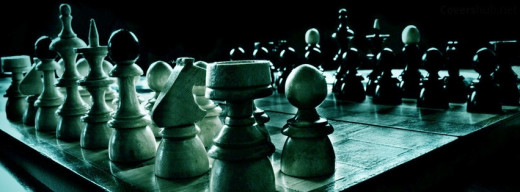
Introduction to Chess pieces
As I mentioned above there are 16 pieces for one side and basically 6 different types of Chess pieces to manage. Let's look at each of the pieces and their capabilities separately.
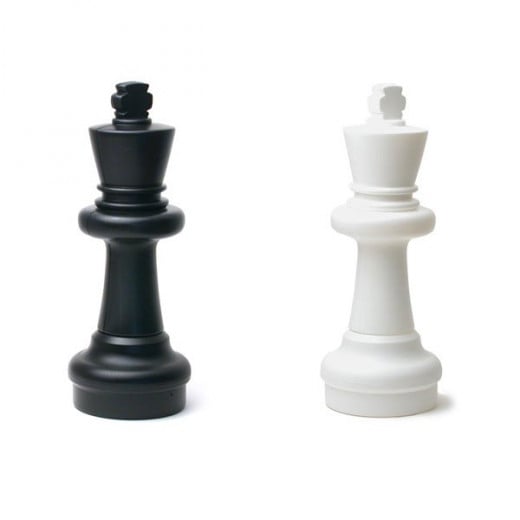
01) The King
The King is undoubtedly the most important piece on the board. Get a threat on your King, you have no other choice to cover it up or move your King to safety-that is a mandatory requirement. This is why the King has been given 'unlimited' power as I mentioned above.
The King denotes, well, a king and the duty of all citizens of Chess is to safeguard their King. Lose your King, you lose the game (and in medieval ages, your country as well).
The King stands in the middle of the board on E1 (for White) and E8 (for black) squares.
The objective of Chess is to 'trap' opponent's King so that the King cannot move in to a safe square or cannot block the path of the attack by another piece. This situation is known as a 'checkmate'. A 'check' is however a situation where your King lies on the attacking path of an opponent's piece. If a check is given by your opponent, our King must either move to a square that isn't being attacked by an opponent's piece. Or one of our pieces could jump in the middle of the attacking path and block the threat.
The King is the only piece that cannot be captured and removed from the board. Hence the objective is to trap the King so he cannot escape.
This Oh so powerful King can only move one square at a time. It can move to any of the 8 squares surrounding him, as long as the squares aren't occupied one of your pieces or not in the line of attack of an opponent's piece. So practically King has constant attack on the eight squares surrounding him and guards any of own pieces on those squares. One more thing is that two Kings cannot come near to each other on opposite squares. Since all 8 squares surrounding the King are constantly in attack by the King and no King can walk into a square with an opponent's pieces' attack, the two Kings cannot come to adjoining squares. I hope that was clear, if not you know what to do-comment below.
For more on the King visit the Wikipedia page.
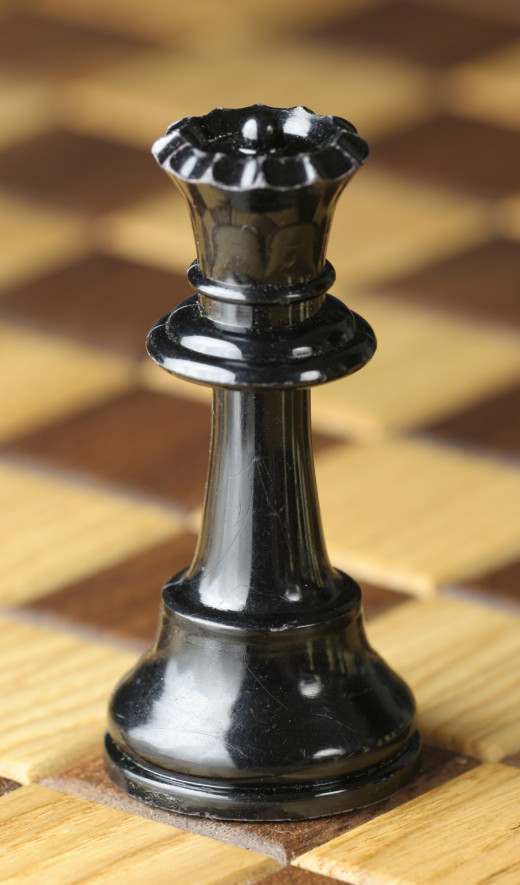
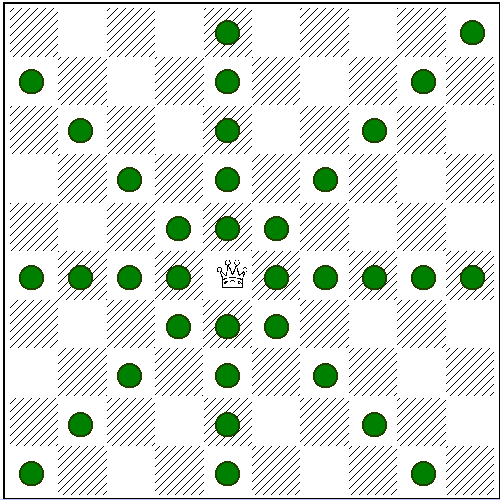
02) The Queen
The Queen is the most powerful character in the game of Chess. I say this because of the very high level of mobility the Queen has and due to extreme usefulness of the piece in both middle game and end game.
The Queen always 'stands on it's color' at the beginning of the game. So White will have it's Queen on D1 (white) square and Black will have the Queen on the exact opposite end on D8 (black) square.
The Queen exerts power on all 8 squares surrounding it and along those eight squares till the board ends or being obstructed by another piece. Basically, the Queen can move horizontally, vertically and diagonally (along a straight line) as long as there are empty squares. Take a look at the picture given to get a better idea.
Due to this massive mobility potential of the piece, Queen is a very valuable piece in the game and should be very much protected till the middle game or end game until you see a clear victory without the Queen. So if you are thinking of sacrificing the Queen, you must sacrifice it for your opponent's Queen or only in a situation you see a clear victory at hand. Else it's quite disadvantageous for you to give up your Queen.
In the end games, Queen becomes a very valuable piece, because the Chess board is almost empty and there are plenty of squares for your Queen to move. Even if you are left with your Queen and your King, and no other piece, still checkmating your opponent's King is possible if you play the moves right. Queen is the only single piece that can give a checkmate with the King. All other pieces will require the aid of more pieces.
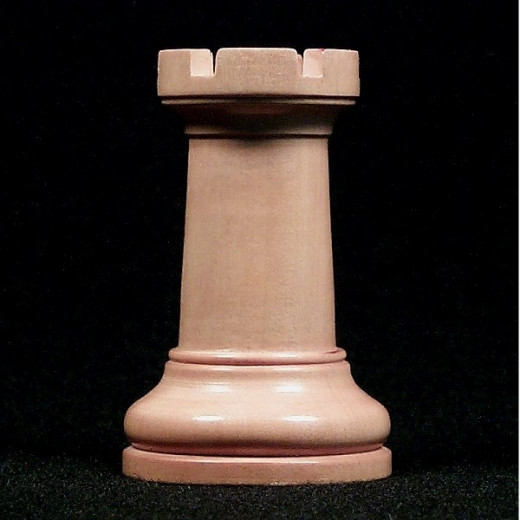
03) The Rook
The Rook is also sometimes called the 'Castle' due to it's appearance as a castle tower, probably. The appropriate term is Rook. There are two Rooks given for each player and they stand at the farthest corners of the board (A1 square and H1 squares for White and A8 and H8 squares for Black.)
The Rook has high mobility as well, but first you will have to get them in to the open. The Rook can travel in horizontal and vertical lines as long as there are no obstacles. No diagonal movement for Rook.
You may have heard about games end with Rook-endings. This means that Rook/s combined with other pieces are entering the end stage of the game and are preparing for a checkmate. Rooks enter the game as active pieces quite late, due to the inability to move them fast at the beginning of the game. Also with the limited mobility in the beginning with many pieces occupying squares, it is quite riskier to bring the Rooks in to the active battlefield. You would rather want to 'develop' the Rooks towards the middle and the end game.
Two Rooks on the same row or column is a lethal combination and provides the opportunity for one of the easiest checkmates available in Chess. This is why two Rooks value at 10 (5 each), whereas Queen values at 9. Meaning two Rooks could be valuable than a Queen.
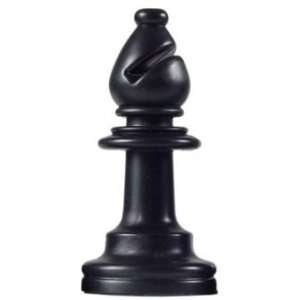
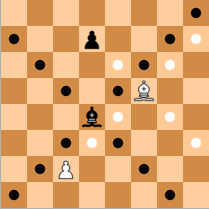
04) Bishop
There are two Bishop pieces available for each player. White's Bishops are situated on C1 and F1 squares and Black's Bishops on C8 and F8. If you look at the board you will see that each sides' Bishops are located on each two colors. So White and Black will have two Bishops situated on a White square and a Black square.
Now, Bishops can only move diagonally, along it's intended color. So that give one side two Bishops that can roam on white and black diagonals. For a better understanding look at the image next to this.
Bishops are given a value of 3 a piece, but personally I believe they play a much bigger role than their value denotes. Bishops and Knights play a massive role in the beginnings of the game and middle game and sometimes they survive into the end game. Bishops are relatively useless in the end-game compared to Rooks and Queen, but are more valuable compared to Knights.
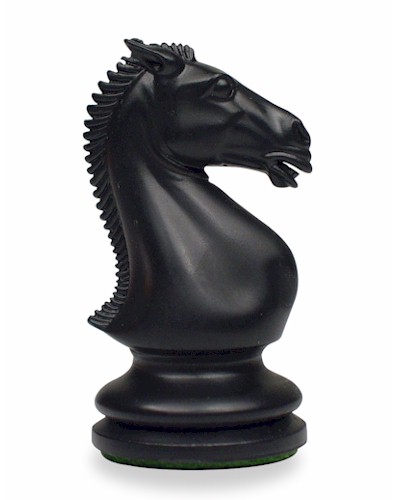
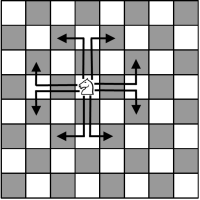
05) Knight
Knights are the horses of the game. And they do gallop. Knights are the only pieces that can 'jump' over own and opponent pieces on the board. Hence Knight's attack will be at the destination square only (not along the path of it's travel).
Knights have a relatively complicated movement which will be better explained through an image. So take a look at the picture.
As you can see on the picture, Knight had a kind of 'L' shaped movement. It is also important to remember that Knights 'gallop' over to the destination squares marked by the arrowhead. So a Knight will not attack or pose a threat to any of the pieces in it's line of movement. It will attack only to the square which it ends it's L shaped movement.
Knights are given a value of 3 as well, but they too play a huge role in the opening and middle games. Basically after first or second moves in to the game, usually Knights come out for the attack.
In the middle game Knights can be conceived as more important than Bishops, but in the end-games Bishops are more important. This is concerning the easiness to provide a checkmate. Two Knights and a King can provide a checkmate if played perfectly.
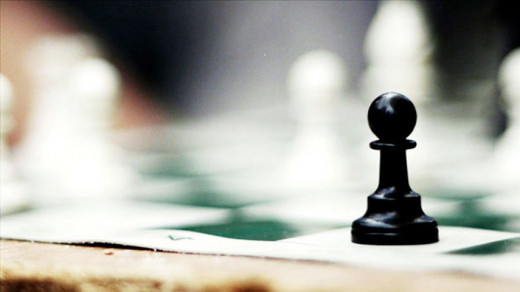
Additional reading on Pawn strategies
Get your own portable Chess board
06) Pawn
Each side gets 8 of these tiny little soldiers. These line of pawns provide protection for the major pieces and help each side to provide protection to the advancing pieces. Pawns are the 'expendables' of Chess.
Pawns move one square ahead at a time, but they attack/capture pieces on two immediate diagonal squares in front of them. So remember, they pose a threat only to the two immediate diagonal squares.
Pawns are given a value of 1, due to the low mobility they have. But it is not necessarily the case always. As I said Pawns move only forward. So what happens if a Pawn get to the farthest corner of the board, basically the last row of the enemy's territory. Well, this is where you are going to love those tiny soldiers. By chance or skill if a Pawn makes it to the other corner of the board, immediately it has the power to convert to any of the major pieces of the game. Yes, you could obtain a Queen, Rook, Knight or a Bishop.
Sound like fun? Not so much. As soon as the opponent sees that you are trying to push a pawn to his corner of the board, he will do everything in his power to stop it. Last this he wants is two Queens attacking his pieces. So considering the effort you have to muster to push a pawn to the other corner, it is worthy to get a Queen rather than any other piece. But there maybe rare circumstances that may not give the best advantage. Those are deeper stuff.
There could be end-games where your sole objective would be to push a single Pawn left to the other corner and get a Queen and defeat your opponent.
So there you go, all the Chess pieces explained briefly.
The hub became much longer than I expected it to be, but I don't regret a single word of it. But let's reserve basic Chess strategies and Openings to a separate hub to enhance user-friendliness of the article.
For more elegant Chess play
Show your love for Chess
How often do you play Chess?
Classic Chess tournament Vinyl board (FIDE standards)
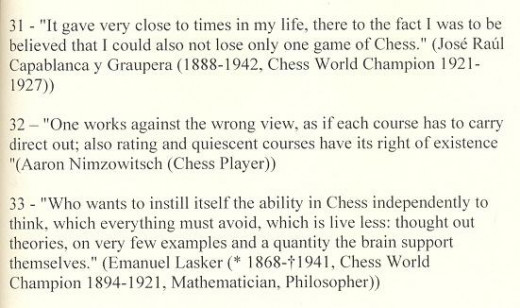

World Chess Championship 2013
I began to collect data for this hub purely out of the curiosity generated from the recently ended World Chess Championship 2013. I hope a lot of other people's curiosity arose at the same time.
Last Friday (November 22, 2013) saw the end of the World Championship series while crowning a new world champion.
The title was defended by Grandmaster Viswanathan Anand (43) an Indian who won the world championship for 5 years in a row. The challenger was a 22 year old Norwegian Grandmaster named Magnus Carlsen.
Magnus is the number one ranked player in the world at the moment and before the tournament as well. It was his first world championship battle and he was nervous. Anand was cool and collected, but at the end of the 10th match up between the two players, Magnus Carlsen was a clear 3 points ahead of Anand. There were only twelve matches in the tournament and there was no way Anand could win afterwards.
Magnus Carlsen is young, but he had ruthless Chess game-specially in the end-games. His strategy and perfect play is almost unbelievable. So we might be at the verge of a new era for Chess. Look at Magnus's famous saying below.
"Some people think if their opponent plays a beautiful game, it's OK to lose. I don't. You have to be merciless."
- Magnus Carlsen
Voice your thoughts...
As usual thank you for reading my hub and if you like this article make sure to comment, rate and share it among other enthusiasts. Feel free to subscribe to my profile on HubPages for more interesting hubs in the future.
Please do make comments, both negative and positive about this hub below. I appreciate all of it and will reply as soon as possible.
Thank you.







